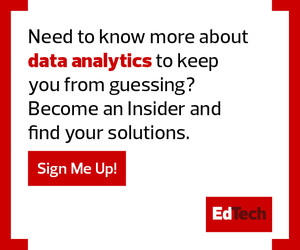Comprehensive Data Analytics Requires Breaking Down Silos
My primary role is to serve as a facilitator between academic departments, administrative units and our central IT office. I help bring relevant issues to the surface, gather the right stakeholders and provide background information about the situation before coordinating efforts to develop consensus and take action.
Most of this work requires the collection of data from a variety of sources, but the data tends to be siloed and difficult to gather. How can we expect to make meaningful decisions if our stakeholders don’t have all the information they need?
When it comes to decisions related to technology, the Office of Information Technology is often asked to lead the process. But those decisions should not be made in a vacuum. It’s my role to start conversations, not end them. These decisions will impact our entire community, so inclusion of a wide variety of stakeholder voices is just as important as the data we collect.
LEARN MORE: How to use analytics in support of university DEI goals.
Our students are too often overlooked in our decision-making processes, and as the primary customers, they should be included as much as possible. They tend to be much more comfortable sharing their data with us if we are transparent about what we are collecting and how it is being used. Students can be immensely valuable contributors to the decision-making process and giving them a voice goes a long way in addressing concerns related to how and where we use data.
Maintain Open Communication Between IT and University Stakeholders
Not unlike other institutions, our IT initiatives require us to innovate on the fly and make decisions quickly, which limits the amount of time we have to solicit feedback from our users. Gathering meaningful feedback is difficult to do with only IT folks on the steering committee, so installing shared governance over our projects helps to ensure we are evaluating our work through student, staff and faculty perspectives.
In addition to my position as an IT leader here at Rutgers, I also serve as an instructor, which informs my work constantly. My classroom is a great place for me to get feedback directly from our students and provide some insight into how we operate. Teaching has also given me a great deal of credibility with the faculty community as it has allowed me to experience the impact of our IT decisions on their work and has helped me cultivate a network of instructors to gather feedback and include in our governance groups.
Consistent Feedback is Key to Effective Technology Projects
If you want to improve your data analytics processes to better inform your decision-making, first recognize that you’re already doing most of the work — you just might not be looking at the full picture. Breaking down data silos and including additional community members can provide you with a more complete picture of your current state, allowing you to better envision the desired future state and how to get there. But that doesn’t mean you have to wait until you have it all figured out.
There’s a lot of low-hanging fruit we can use to create efficiency and effectiveness by simply tying existing data sets together. Great utility can be found in even the most mundane data, but we have to be willing to experiment and play collaboratively to find it.
UP NEXT: What universities need to know about software-defined data centers.











